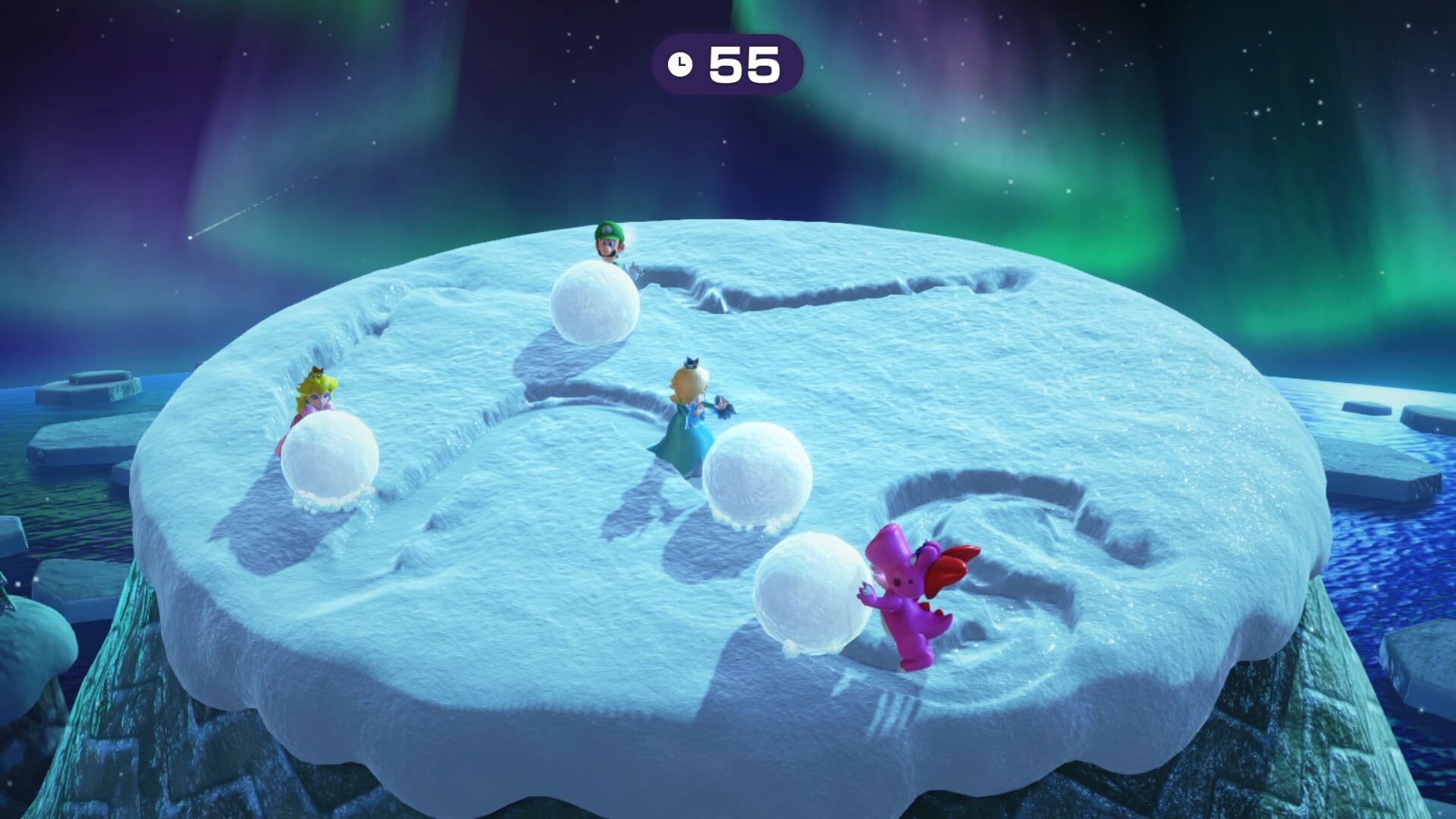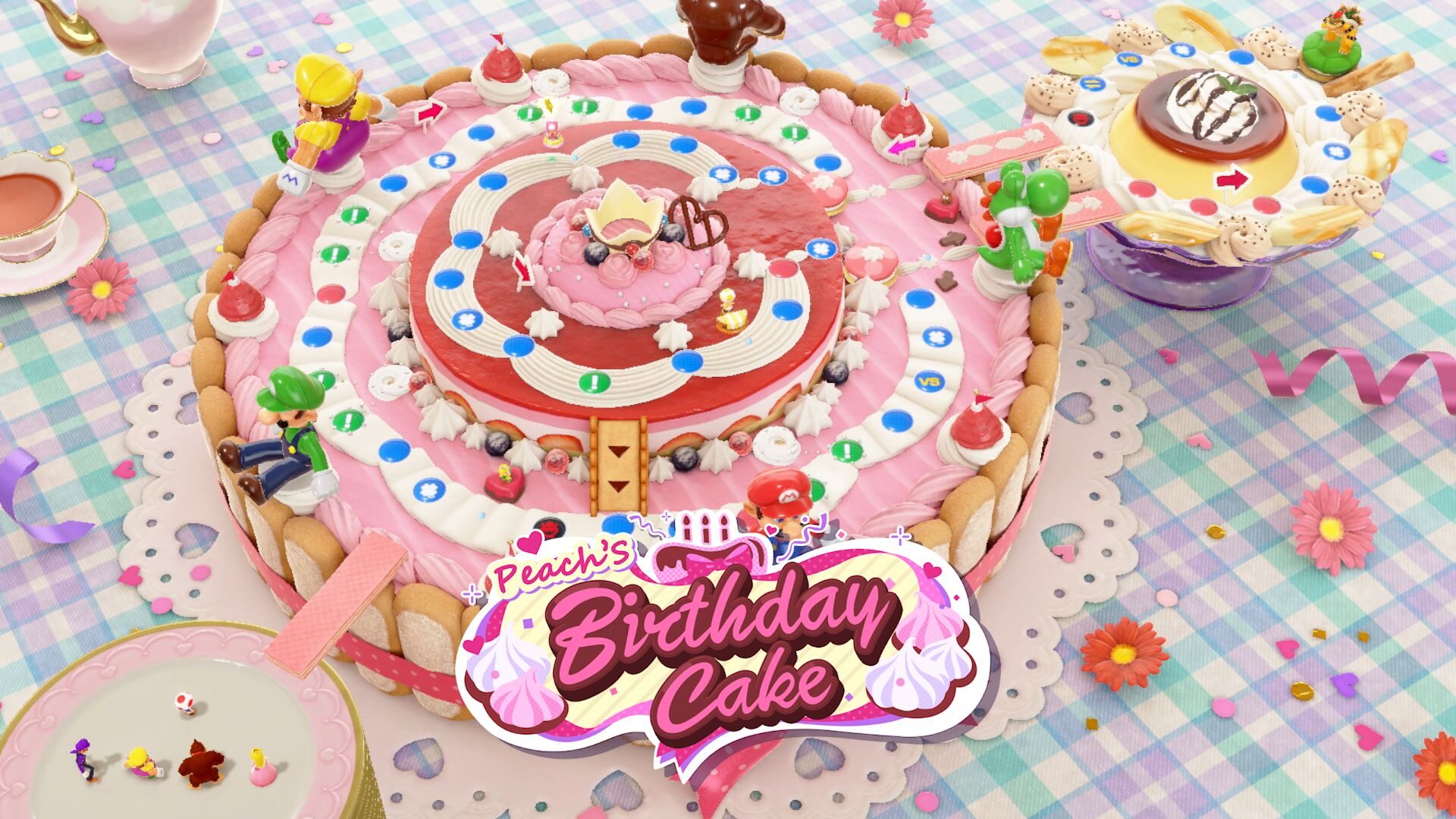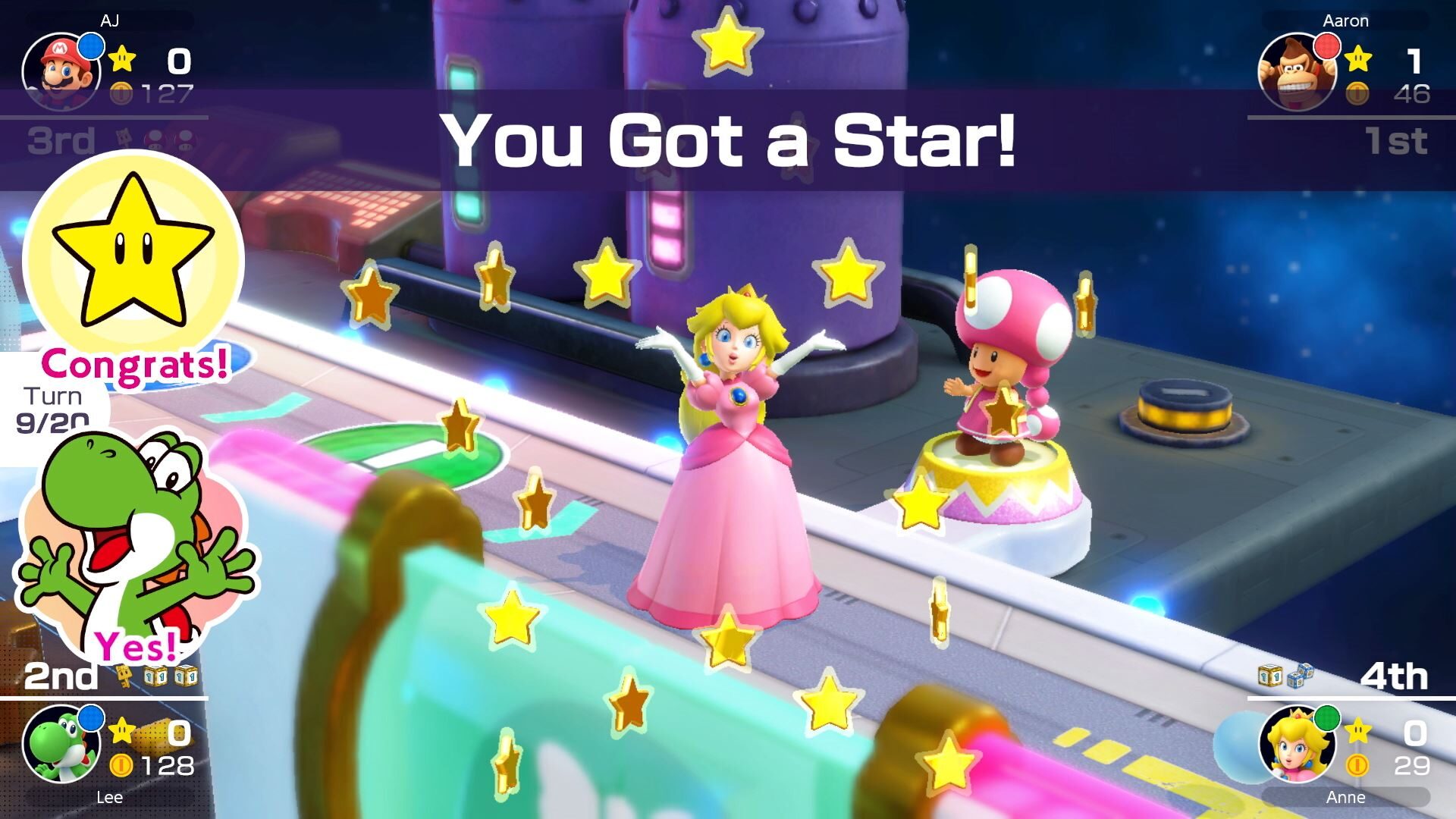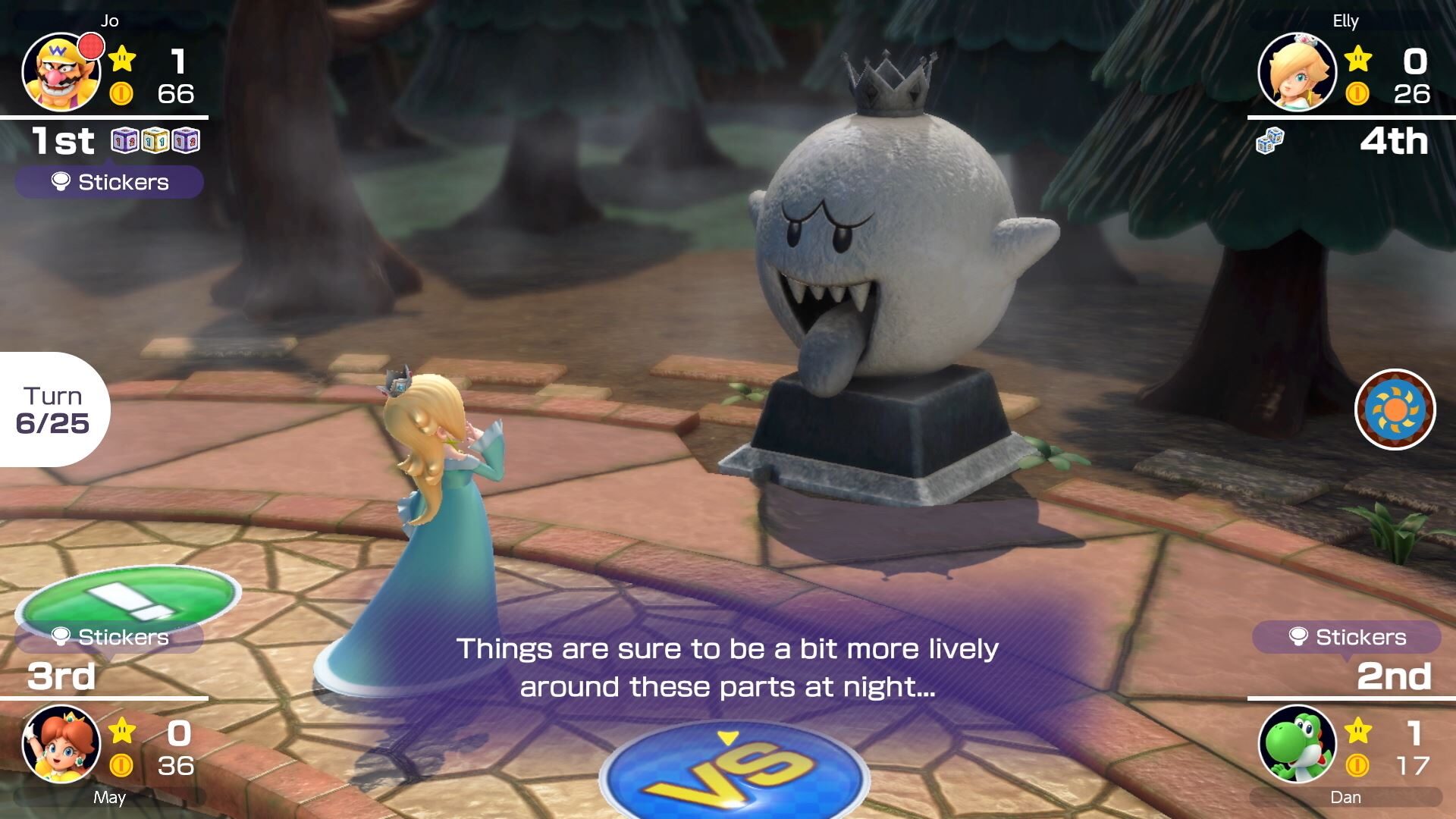If there’s one thing Nintendo never misses an opportunity to monetize, it’s millennial nostalgia. And if there’s one thing that Nintendo loves to avoid, it’s admitting when it’s made a mistake.
Looking at it that way, Mario Party Superstars kills two birds with one stone for the Big N.
I’m no expert on the Mario Party franchise. I fell off before it even reached the GameCube. But from what I can gather, the series hit a rocky patch once the Wii came out. It changed a lot of the rules, to the point where it began to feel overstuffed. While Super Mario Party was a fun way to introduce the franchise to the Switch, it was still trying to do too much for Mario Party aficionados—at least, from what I can gather.
In that sense, Mario Party Superstars probably feels like a breath of fresh air to players who have seen the franchise change and evolve over the course of the last two decades. By remaking classic maps and minigames, most of which come from the Nintendo 64 and GameCube titles, Superstars basically reverts the series to its original formula, gives old boards and minigames a fresh coat of paint, and offers fans what they’ve always wanted, which is more of the same.
Prior to Super Mario Party, the last game in the series that I’d played was the third Nintendo 64 title. In my eyes, Super Mario Party felt overly complicated, while still retaining the essence of what Mario Party is, i.e., a ghoulish delight of friendship-ruining misery. It was fine, and I enjoyed it for the week I played it, but I barely got any mileage out of it.
For several reasons, Mario Party Superstars might make me a fan again.

The first and most obvious reason is that it’s simple. For the most part, this is the kind of Mario Party that I remember. There are four players, a board, and a collection of minigames, with some fate-changing spaces and events and just enough strategy to keep the proceedings feeling somewhat under your control.
Specifically, Superstars offers some of the best boards and minigames that the series has to offer, presented with Nintendo’s modern character models and graphics. The minigames hark back to an era when the company didn’t feel the need to shoehorn in annoying mechanics like motion controls to justify basing their hardware on them. Even Super Mario Party was guilty of this; its forced single-Joy-Con control scheme highlighted the adaptability of the Switch as a hybrid console, but it just felt terrible to play. Superstars says, forget all that, you can use whatever controller you want as long as it has a joystick, and it actually does a better job of highlighting the Switch’s best qualities in the process. Being able to play handheld on the Switch OLED’s screen seems like a better selling point to me than “you only need one Joy-Con!”
Superstars’ collection of boards also goes a long way in recapturing the magic of classic Mario Party. All five of the game’s boards come from the first three Nintendo 64 Mario Party titles, which not only helped me feel right at home after a long time away, but also let the artists and designers highlight just how far Nintendo’s visuals have come. Each board is packed with details and bursting with color. The confections in Peach’s Birthday Cake look so good that they actually made me want to go to the grocery store to buy cookies. I wish I were exaggerating.

This is the Mario Party I know and love, but the joy of playing Mario Party is playing it in the same room with friends. And here’s the problem with that: I’m 35 years old. I don’t bring my Nintendo to my friends’ houses anymore. Heck, I don’t even live near my friends, and the ones who have houses have families. They don’t need some emotionally stunted, underachieving manchild bringing over Mario Party and forcing them to play it with him.
I might be overstating it a little bit, but the point is that I no longer live in a world where my friends and I will play Mario Party all the time, and playing against bots can be a fun distraction, but it’s missing that human element. When the game screws you over and gives your friend your stars, there’s the sense that at least another human player benefited from my misery. It contributes to the narrative, which becomes another thread in the tapestry of friendship. When the game screws you over for an AI that the game also controls, I feel like I’m staring into an emotionless void, with the faint, sterile taste of metal in my mouth.
Thankfully, even without friends who long outgrew childish delights such as Mario Party, I can still play with other humans through the miracle of the internet. And that’s the second reason why Superstars might fully bring me back to the series—though it has nothing really to do with the game itself, but more the platform I’m playing on.
Playing on the Switch OLED means that I also now have a dock into which I can plug my ethernet cable. Of course, I could have ordered an adapter for my old dock, but I wasn’t about to let Nintendo make me buy yet another peripheral that gives me access to a feature that’s bog standard with any other respectable piece of gaming hardware. However, now that I have a Switch OLED—the one that Nintendo sent me to review, no less—I can play online games the way they’re meant to be played, which is not on Wi-Fi.
Hardwired in, Superstars plays great online. I noticed not a single moment of lag. If I had, and if that lag resulted in me losing a minigame, given the rest of the indignities I regularly suffer at the hands of Mario Party games, I literally might have died. Nintendo might have actually killed me. Thankfully, lag was not part of my experience.
Moreover, the inclusion of stickers as the only way to communicate added a fun sense of humor and camaraderie to the proceedings. In one of my games, a sort of alliance formed, if only an emotional one, between my Waluigi and another player’s Birdo. We constantly gave each other props. The Peach in our game, however, was ruthless. She stole stars, coins—whatever she could get her greedy little hands on (which is no surprise, given her royal stature). The Yoshi, meanwhile, kept to himself, functioning as a wild card who doled out justice for and against all three of their rivals, serving as a silent, moral center for the match. Was playing with these strangers and communicating solely through stickers as fun as getting drunk and playing with friends in actual meatspace? No, but it wasn’t a bad way to spend an hour, either.

If I were a cynical man, I would venture to say that Nintendo’s release of Mario Party Superstars is at least partly motivated by once again cashing in on millennial nostalgia. Wait. I am a cynical man, and Superstars most certainly is another way for Nintendo to cash in on millennial nostalgia.
But, as far as nostalgia trips go, Superstars at least offers something that Nintendo is known for delivering, which is joy. It’s not pernicious and lazy in the way that a lot of Nintendo’s re-releases are, especially recently with the likes of Super Mario 3D All-Stars and the controversial Switch Online Expansion Pack. Aside from the fact that we only get five boards, Mario Party Superstars feels surprisingly generous for what it is. It even almost feels new.
I won’t go so far as to say it feels like Nintendo is admitting that, yeah, maybe the Mario Party series strayed a little too far from what made it fun in the first place. Like I said before, Nintendo almost never admits that it’s wrong about anything. To do so would go against the very thing that has made Nintendo—maybe the most insular gaming company—the success that it is.
But Superstars does feel like a subtle nod to those who may have lost faith. Not a knowing nod, or even a friendly nod, but a cocky nod, one that says, yeah, we still know how to make fun Mario Party games. So shut up and play it, you dirtbag, you little weasel. Still, given a choice between this kind of Nintendo and a hypothetical one that turns Mario Kart into an NFT nightmare, I will happily accept the nickel-and-diming, nostalgia-exploiting Nintendo that we currently have. At least when we’re trading our money with Nintendo, we’re trading it for joy.

Product was provided by Nintendo for the benefit of this coverage. Images: Nintendo

Michael Goroff has written and edited for EGM since 2017. You can follow him on Twitter @gogogoroff.